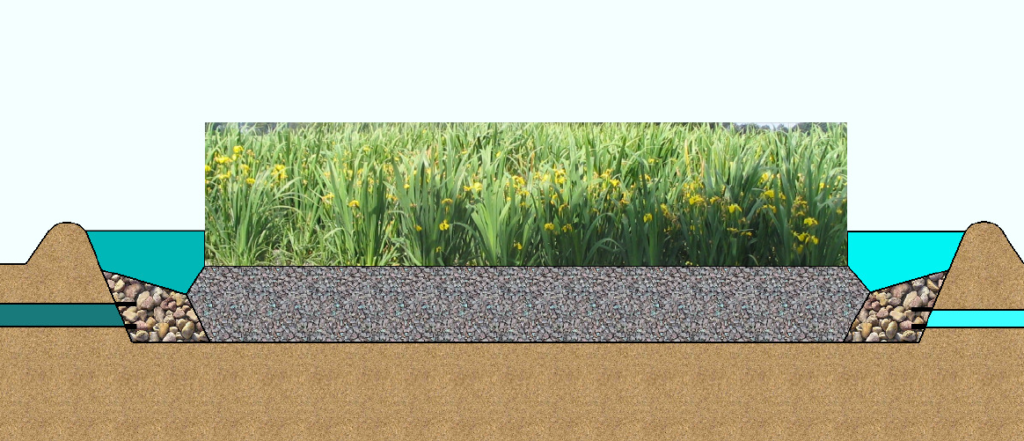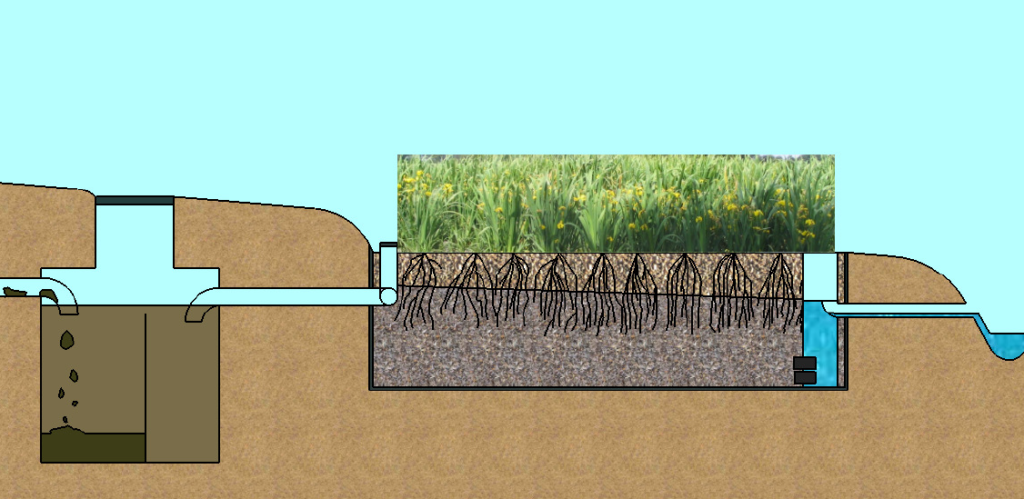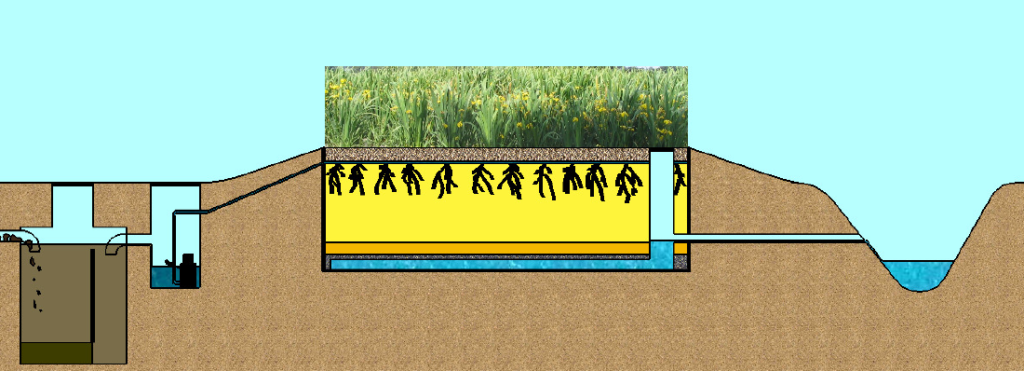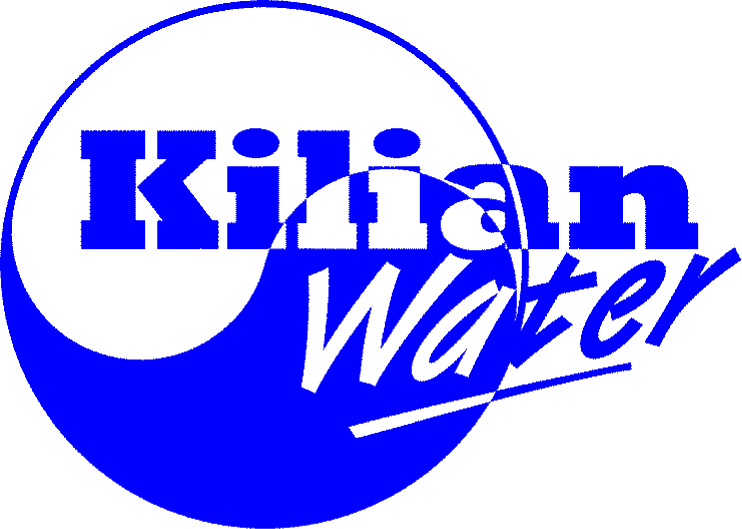In general one can distinguish three types op constructed wetlands:
1 Surface flow constructed wetlands
2 Horizontal subsurface flow constructed wetlands
3 Vertical flow constructed wetlands
1. Surface flow constructed wetlands
Surface flow constructed wetlands appear similar to natural swamp area’s in which plants are rooted in a submerged layer of sand or gravel. Aeration of the sediment takes place by the unique property of helophyte plants which act as oxygen pumps providing dissolved oxygen with their roots to a wide variety of micro organisms. We apply surface flow constructed wetlands generally when flow rates are highly unpredictable (run-off from roads) and when anaerobic pre treatment in a septic tank or biodigester is not required, this because of the odor nuisance it would cause. The design is mainly dependent on spatial limitations, ambient temperatures, matrix characteristics, and organic and hydraulic load.
Figure 1. Surface flow constructed wetland.

2. Horizontal subsurface flow constructed wetlands
This type of constructed wetland is most commonly used for aerobic post treatment of domestic wastewater and can take a higher hydraulic load than a surface flow constructed wetland. In order to dissolve solid organic matter anaerobic pre treatment in a septic tank or biodigester is required. A thick layer of gravel above the aquifer holds a layer of stagnant air and prevents odor nuisance in the vicinity. Aeration takes place as in surface flow constructed wetlands. The wastewater is however forced to pass thorough the matrix ensuring intensive contact between wastewater and the bacteria in the rhizosphere (root zone of the plants). In this manner all wastewater is treated as no short circuit flow is possible. Horizontal subsurface flow constructed wetlands, when accurately designed, provide an extremely reliable low cost aerobic post treatment solution which is applicable all over the world.
Figure 2. Subsurface flow constructed wetland.

3 Vertical flow constructed wetlands
The desire to further reduce the size of constructed wetlands led to the development of vertical flow constructed wetlands. Anaerobic pre treated wastewater coming from a septic tank or biodigester is intermittedly pumped on top of the constructed wetland. By trickling down the wastewater effectively sucks air in the constructed wetland whenever the pump stops, forcing aeration of the rhizosphere. This increases the aeration capacity up to approximately twenty times compared to horizontal subsurface flow constructed wetlands. Apart from that no short circuit flows are possible and due to lower levels of oxygen deeper in the matrix nitrate is removed under anoxic conditions. We can, for instance, adjust the level of the aquifer and the depth of the matrix as design parameters.
Figure 3. vertical flow constructed wetland

